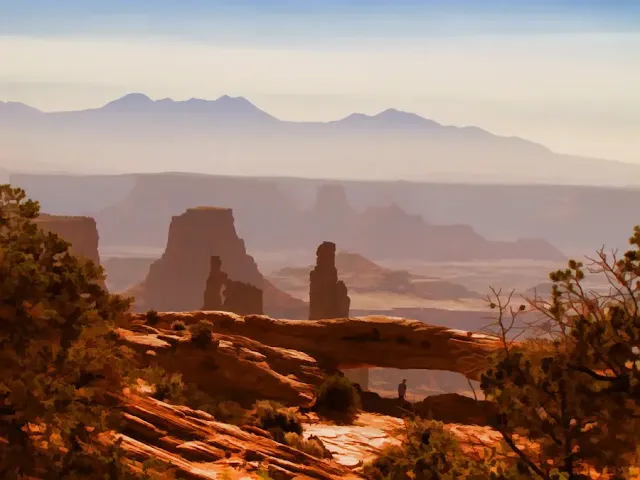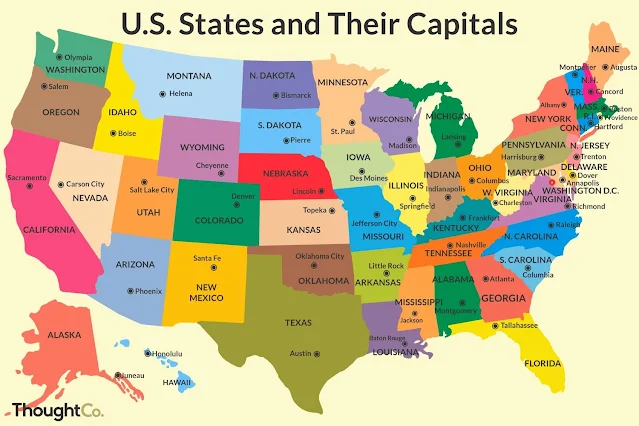The United States of America
The United States of America (USA) is a vast and diverse country, known for its significant global influence across various domains. This comprehensive overview delves into its geography, tourism, history, culture, society, and economy, highlighting its strengths and providing a well-rounded perspective on this influential nation.
Geography
The USA is located in North America, bordered by Canada to the north, Mexico to the south, the Atlantic Ocean to the east, and the Pacific Ocean to the west. It spans approximately 9.8 million square kilometers (3.8 million square miles), making it the third-largest country in the world by total area. The country comprises 50 states, a federal district (Washington, D.C.), and several territories. The topography is highly varied, featuring mountain ranges like the Rockies and Appalachians, expansive plains, deserts, and an extensive coastline stretching over 19,000 kilometers (12,000 miles).
Key geographical landmarks include:
- The Grand Canyon in Arizona, a dramatic gorge carved by the Colorado River, spanning about 277 miles (446 kilometers) long.
- Yellowstone National Park, established in 1872, is the first national park in the world, known for its geothermal features and wildlife.
- The Mississippi River, one of the longest rivers in the world, flowing 2,340 miles (3,766 kilometers) from Minnesota to the Gulf of Mexico.
Tourism
Tourism is a major sector in the US economy, attracting millions of visitors annually. Key destinations include:
- New York City, known for its iconic landmarks such as the Statue of Liberty, Times Square, and Central Park. The city is a cultural and financial hub.
- Los Angeles, famous for Hollywood, beautiful beaches, and attractions like Disneyland.
- Las Vegas, renowned for its vibrant nightlife, casinos, and entertainment shows.
- Washington, D.C., the nation’s capital, home to historical landmarks such as the White House, the Capitol, and the Smithsonian Institution.
The US National Parks System, encompassing over 400 sites, preserves natural beauty and historical heritage, offering numerous outdoor recreational opportunities.
History
The history of the USA is marked by pivotal events and transformations:
- Colonial Period: European settlers, primarily from Britain, Spain, and France, established colonies in the 17th and 18th centuries.
- Declaration of Independence: On July 4, 1776, the Thirteen Colonies declared independence from Britain, leading to the American Revolutionary War (1775-1783).
- Expansion and Civil War: The 19th century saw westward expansion, fueled by the doctrine of Manifest Destiny. The Civil War (1861-1865) was a significant conflict over issues including slavery and states' rights, culminating in the abolition of slavery with the 13th Amendment.
- Industrialization and World Wars: The late 19th and early 20th centuries were characterized by rapid industrialization and involvement in World Wars I and II, establishing the US as a global superpower.
- Civil Rights Movement: The 1950s and 1960s saw significant social and political changes, with movements advocating for civil rights and social justice.
Culture
American culture is a melting pot of influences, reflecting its diverse population:
- Languages: English is the primary language, with Spanish being the second most spoken language due to the large Hispanic population.
- Literature and Music: The US has a rich literary tradition with authors like Mark Twain and Toni Morrison. Music genres such as jazz, blues, rock, and hip-hop originated in the US.
- Film and Television: Hollywood is the epicenter of the global entertainment industry, producing influential films and TV shows.
- Festivals: Key cultural events include Thanksgiving, Independence Day, and various local and national festivals celebrating music, food, and heritage.
Society and Customs
American society is characterized by its diversity and dynamic cultural landscape:
- Cuisine: American cuisine is diverse, with regional specialties such as New England clam chowder, Southern barbecue, Tex-Mex, and Pacific Northwest seafood. Fast food, including burgers and fries, is also a significant part of American culinary culture.
- Holidays: Major holidays include Christmas, Thanksgiving, and the Fourth of July, each celebrated with unique traditions and festivities.
- Sports: Popular sports include American football, basketball, baseball, and ice hockey. The Super Bowl, NBA Finals, and World Series are major sporting events.
Economy
The US economy is one of the largest and most diverse in the world:
- GDP: As of 2024, the US GDP is approximately $27 trillion, making it the largest national economy globally.
- Industries: Major industries include technology, finance, healthcare, manufacturing, and agriculture. The US is a global leader in technology and innovation, with Silicon Valley being a major tech hub.
- Trade: The US has a significant global trade presence, with major trading partners including China, Canada, and Mexico. Key exports include machinery, vehicles, and agricultural products.
Strengths
The United States has several key strengths:
- Economic Power: The US is a leading economic power with a highly diversified economy and a strong financial sector.
- Military Strength: It possesses one of the most advanced and capable military forces in the world.
- Cultural Influence: The US has a profound cultural impact globally, particularly through media, technology, and entertainment.
- Innovation and Research: The country is a leader in scientific research and technological innovation, with numerous prestigious universities and research institutions.
Sources:
- Central Intelligence Agency (CIA) World Factbook
- U.S. Department of State
- National Park Service
- Bureau of Economic Analysis (BEA)
- Library of Congress
This overview provides a snapshot of the multifaceted nature of the United States, emphasizing its geographic diversity, cultural richness, and economic prowess.







No comments